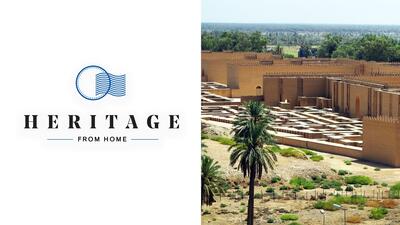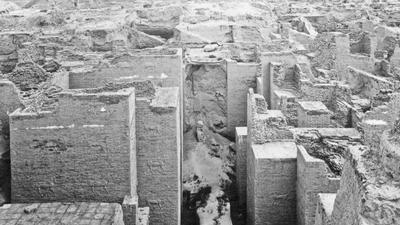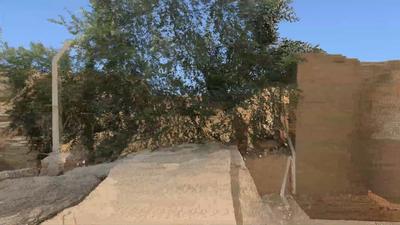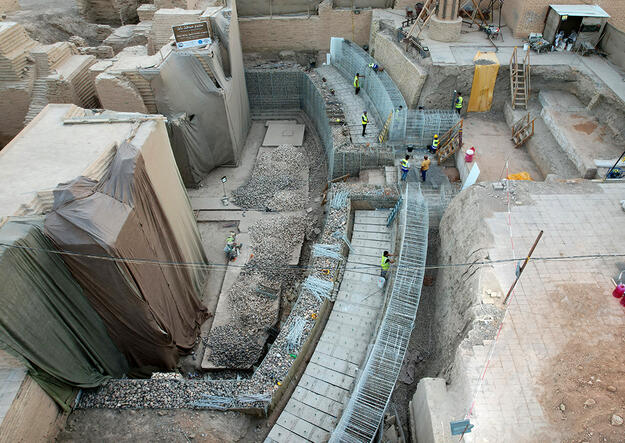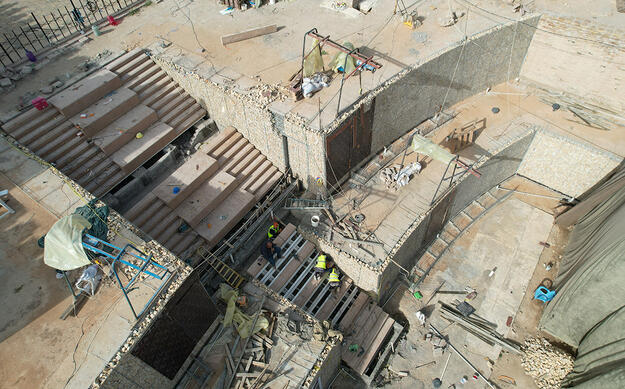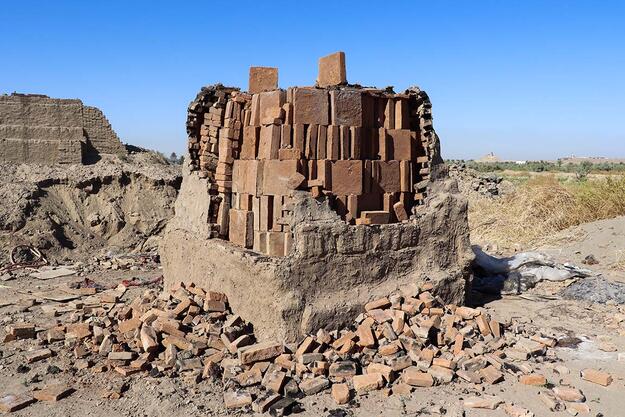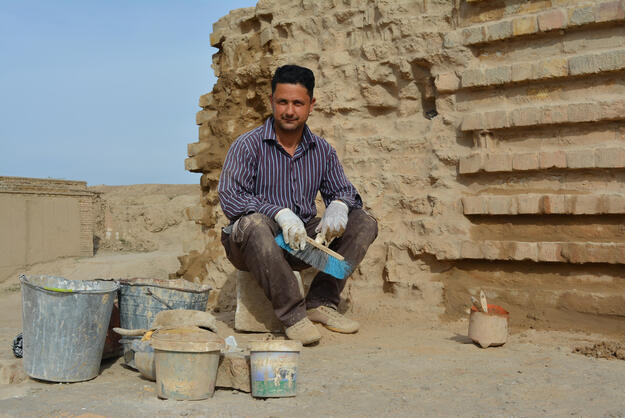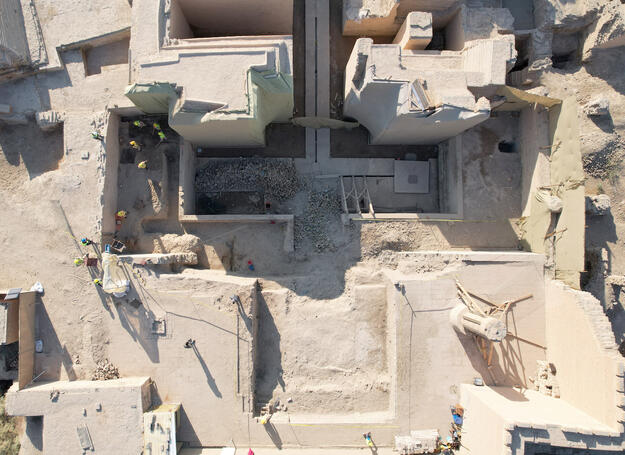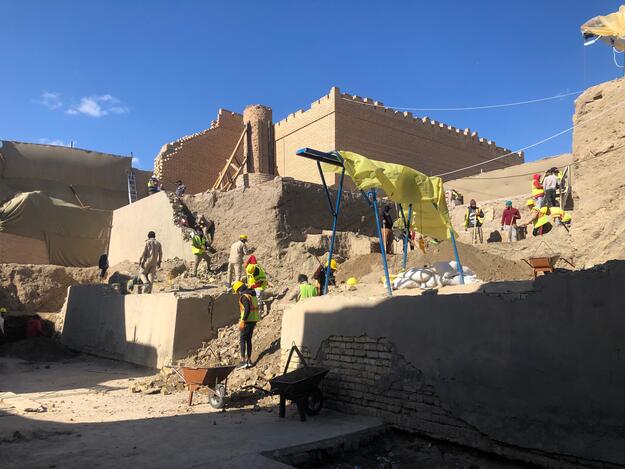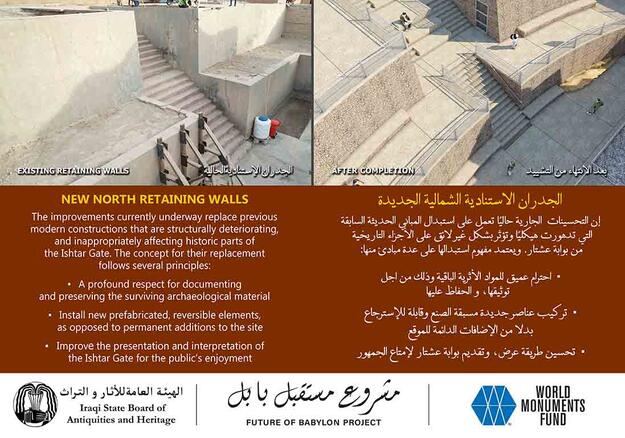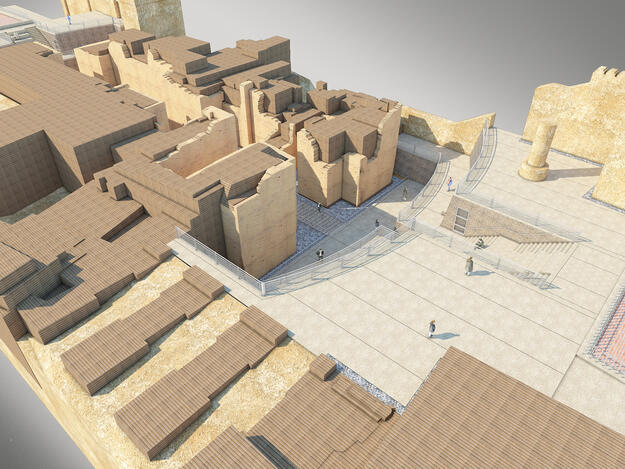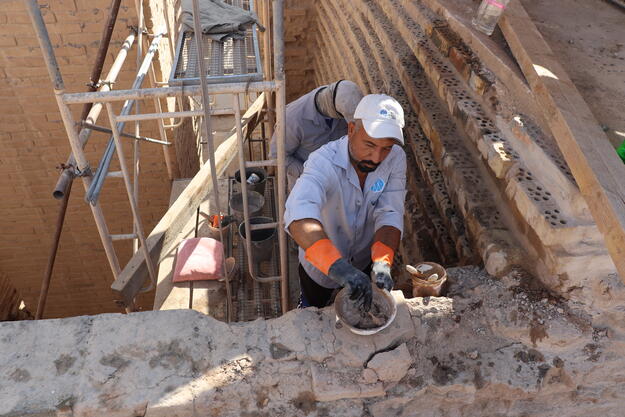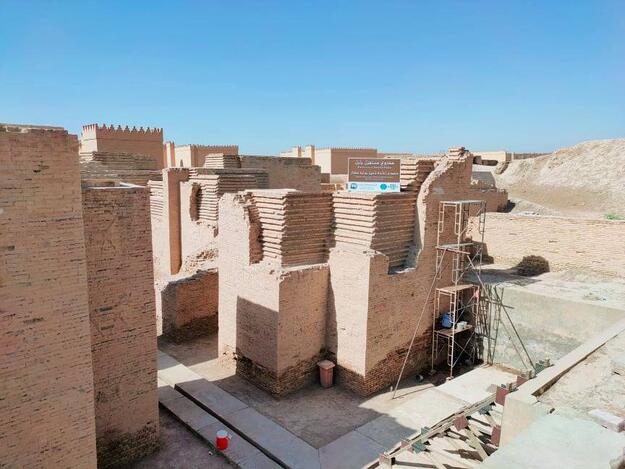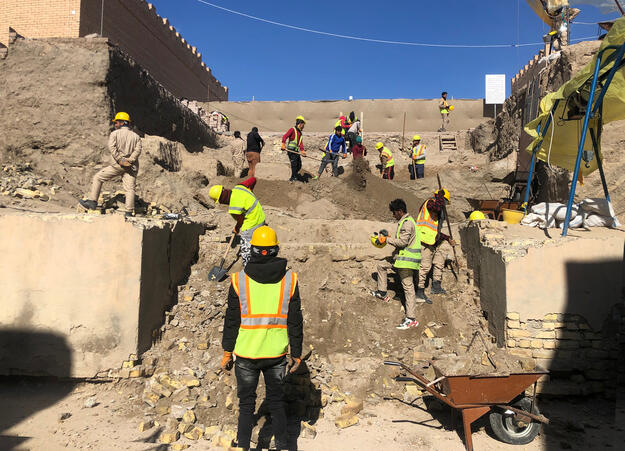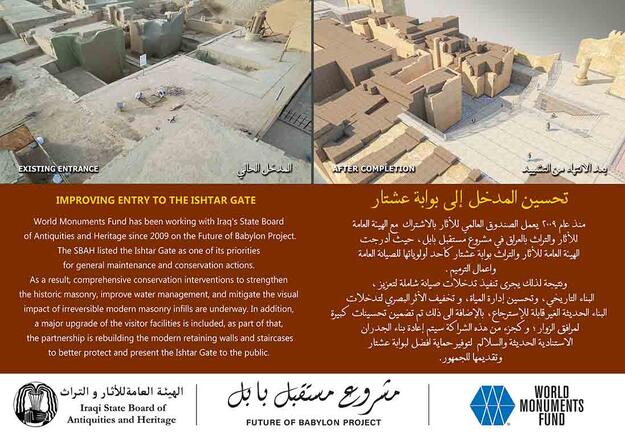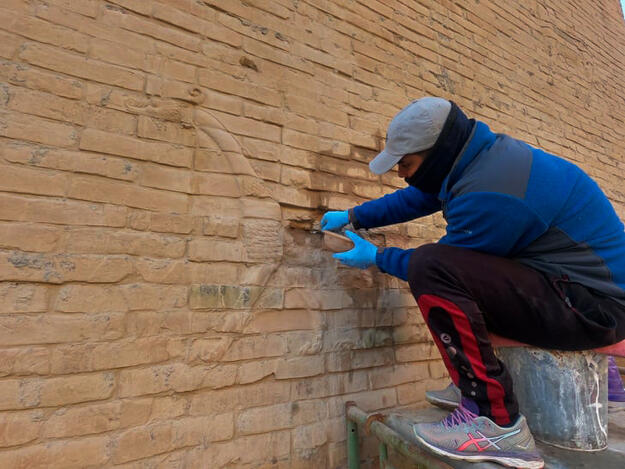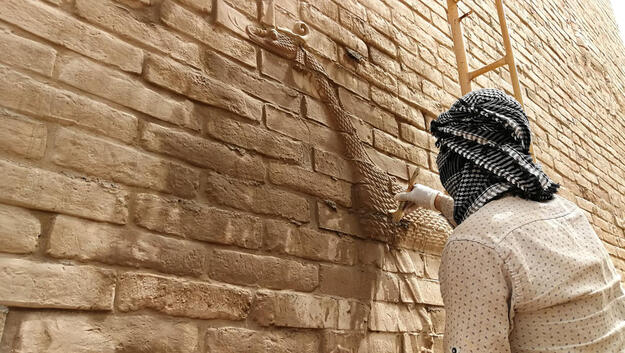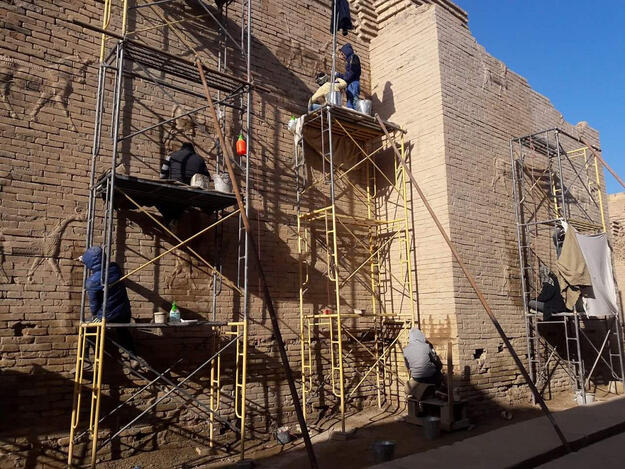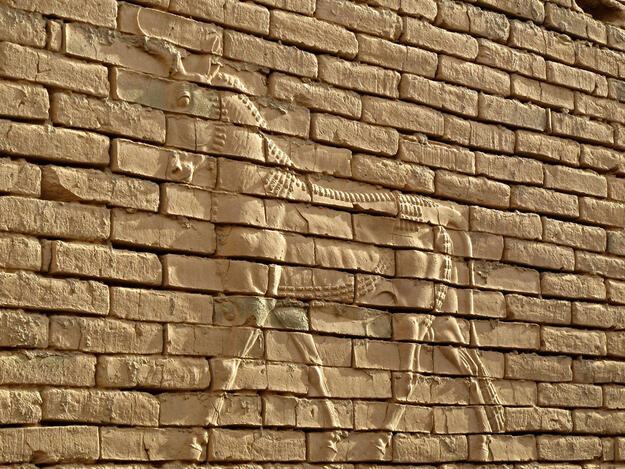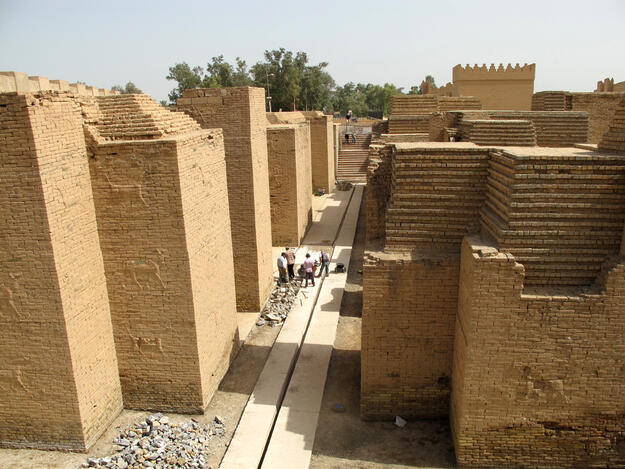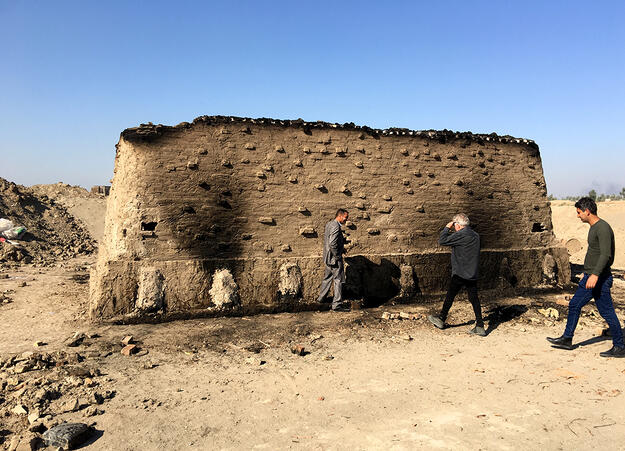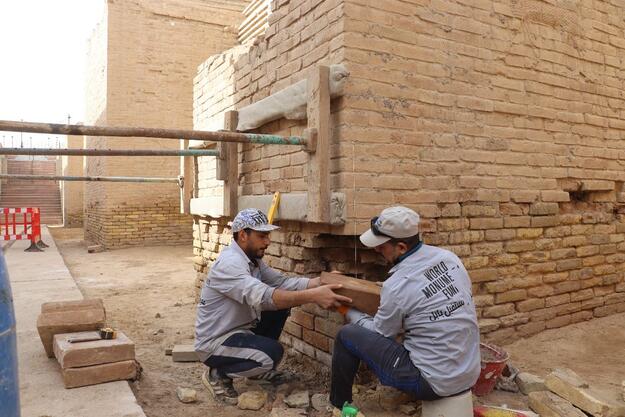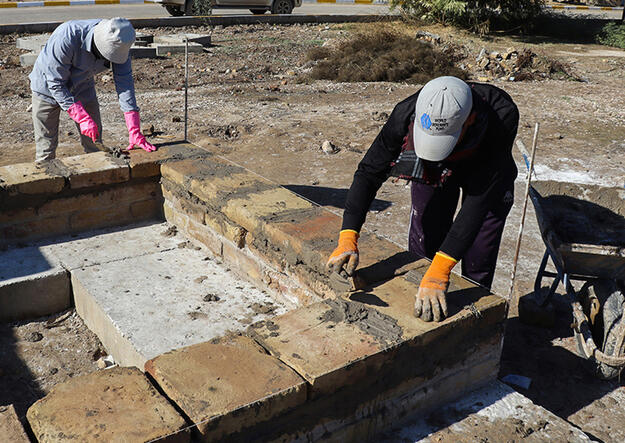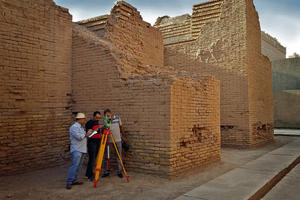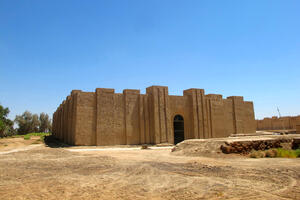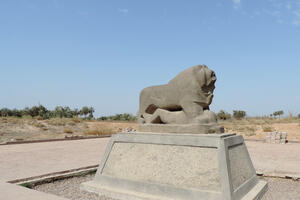The Ishtar Gate of Babylon
The Ishtar Gate in History
The Ishtar Gate is one of the main gates surrounding the inner city of Babylon, capital of the ancient Mesopotamian kingdom of Babylonia. It was the largest and most elaborate of the city’s gateways. The oldest references to the Ishtar Gate come from Old Babylonian cuneiform texts dated around 1600 BCE, and most of the archeological and documentary evidence we have of the Gate was produced under the reign of Nebuchadnezzar II (604-562 BCE).
The Ishtar Gate existed as a double gate, one in each of the two parallel walls surrounding the inner city of Babylon, and stood over the magnificent Street of Procession which led from the North into the center of the city. Originally built in unbaked mud brick with mud mortar like the walls around it, it was was rebuilt numerous times under Nebuchadnezzar’s reign in baked brick with tar mortar. Bulls and dragons in brick reliefs were built into different levels of the gate to reference the patron God of the city, Marduk, and other divine entities. Nine layers of unglazed relief animals have been documented, all facing incoming visitors to protect the city from evils.
Discovery of and Early Work on the Ishtar Gate
In the 1940s, Iraqi excavations unearthed the southern larger gate room of the Ishtar Gate complex. Subsequent excavations in 1959 and 1978 exposed the inside of the southern Gate down to the presently exposed level at 29.5 m asl (+4.0 m), and refilled the northern gate to the same level.
German excavations by the German Oriental Society and the Berlin Museums during 10 months in 1902 unearthed the northern Gate down to the ground water at 26.1 m asl (+0.55 m). German archaeologists only traced the larger, southern Gate next to the surface in order to establish the plan of the gate.
The important remains of the Ishtar Gate remain on site in Babylon. Modern bricks were used to repair the original façade which had been taken away just above the modern level. The lowest levels of the Street of Procession and the Gate cannot be shown as they are too deep under present groundwater levels.
German excavations of the Gate provided enough information on the walls and gate decorations to enable the Berlin museum to reconstruct the glazed relief animals, a reconstruction which can be found in Istanbul, Baghdad, and other museums today.
WMF Work at the Ishtar Gate
WMF has been working with Iraq’s State Board of Antiquities and Heritage (SBAH) since 2009 on the Future of Babylon project. During the project’s early planning process, the SBAH listed the Gate as one of five priority sites for general maintenance and conservation actions.
With WMF guidance, the SBAH’s Babylon Documentation Work Group digitally drew the Ishtar Gate at the brick-by-brick level, recording not only the monument’s form, but also its condition. A video of the early documentation work supported by WMF early on can be found below.
Detailed photo-documentation, monitoring programs, and preparatory studies by the Group allowed it to measure the changing groundwater level and its impact on masonry humidity. Since 2016, WMF and the SBAH have been implementing a series of actions to reduce water damage at the Ishtar Gate and to provide a better visitor experience.
Latest update
Following a successful pilot project to fix decayed masonry at the lower portions of the gate that have suffered from rising damp, WMF is providing the necessary expertise, training, and materials to replace the inappropriate modern masonry infills along the lower levels of the Ishtar Gate façades in accordance with the monument’s historic integrity and authenticity. This work extends to adjoining damaged historic masonry right above the modern infills, where its condition warrants consolidation and, in some cases, replacement with new in-kind building materials to prevent collapse.
World Monuments Fund’s work at Ishtar Gate has been made possible, in part, by the U.S. Department of State and the U.S. Embassy Baghdad.
Videos

